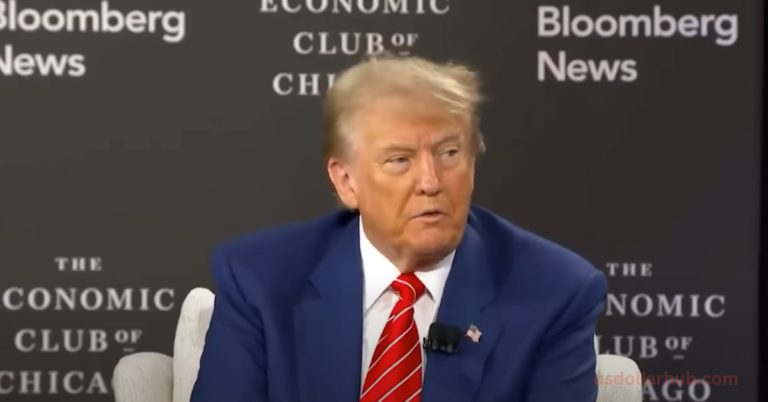Can Trump Lower Car Insurance Rates by 50%? Unpacking the Facts and Feasibility
Car Insurance Rates
Auto insurance rates have become a hot topic recently, spurred by a tweet from former President Donald Trump claiming he could reduce car insurance rates by 50%. But is this claim realistic? In this post, we’ll explore the complexities of the U.S. insurance industry, how rates are determined, and whether such sweeping changes are feasible.

The Real Picture: Are Auto Insurance Rates Out of Control?
Understanding the Numbers
While Trump’s tweet suggests drastic reductions are possible, insurance rates have indeed climbed over recent years—but not to the extent implied. According to data:
- From 2022 to 2023, rates increased by approximately 16%.
- Over the last 3–5 years, cumulative increases have ranged between 30% and 35%.
- Isolated cases show rates doubling, but these are exceptions rather than the rule.
This discrepancy highlights the importance of context. A tweet claiming rates soared by 73% over a single year lacks the nuance required to understand broader industry trends.
Why Insurance Rates Are Rising
State-by-State Regulation
Insurance in the U.S. is regulated individually by states. Each state has its own insurance commissioner, creating a fragmented system. For example:
- California: Strict regulatory measures have led to major insurers exiting the market, citing unsustainable losses.
- Florida: Similar issues have plagued the market, with insurers pausing or limiting policy issuance.
These localized policies make it nearly impossible to implement a nationwide solution, let alone one as sweeping as halving rates.
Economic Pressures
Several factors contribute to rising insurance rates:
- Increased Claims Costs: Natural disasters, higher repair costs, and inflation significantly impact premiums.
- Market Adjustments: Smaller insurers struggle to remain solvent, while larger ones dominate, reducing competition.
- Regulatory Constraints: Some states cap rate increases, forcing insurers to absorb losses, further destabilizing the market.
Can Trump Deliver on His Claim?
Challenges in Reform
To achieve a 50% reduction, major changes would be needed:
- Federal Oversight: Currently, states control insurance regulations, making federal intervention legally and logistically complex.
- Industry Sustainability: Insurers require a balance between premium revenue and claims payouts. Artificially capping premiums could lead to bankruptcies and reduced market participation.
Potential Solutions
While halving rates is unrealistic, some measures could help lower costs over time:
- Encouraging competition by reducing regulatory barriers.
- Investing in technology to reduce claim processing costs.
- Subsidies for high-risk areas to prevent premium spikes.
Lessons from California and Florida
California’s attempt to curb rate increases has driven several insurers out of the market, including major players like State Farm and Farmers Insurance. Similarly, Florida’s strict regulations have caused market instability. These examples show that imposing harsh caps often leads to unintended consequences, such as reduced market availability and higher long-term costs.
Latest News on US Dollar – Visit Here
FAQs About Auto Insurance Rates
Why have car insurance rates increased so much recently?
Rates have risen due to inflation, increased repair costs, and more frequent claims from natural disasters and accidents.
What are the biggest factors affecting insurance premiums?
Factors include your location, driving history, vehicle type, and credit score, as well as state-specific regulations.
Can federal laws override state insurance rules?
Insurance regulation is primarily a state-level responsibility, so federal intervention would require significant legislative changes.
Why do some states have much higher rates than others?
Factors like population density, accident rates, and state regulations influence regional insurance costs.
What happens if insurers leave a state?
When insurers exit a state, it reduces competition, often leading to higher rates and limited policy options.
How do natural disasters affect premiums?
Disasters increase claims costs, causing insurers to raise rates to maintain solvency.
Can switching insurers save money?
Yes, shopping around can often yield better rates, especially if your current insurer implements steep increases.
What are the long-term effects of strict rate caps?
Rate caps can drive insurers out of markets, leading to reduced competition and potential monopolies.
How can I lower my car insurance premium?
Maintain a clean driving record, bundle policies, and explore discounts for good credit or vehicle safety features.
Is it realistic for rates to decrease by 50%?
No. While reforms can help, such a drastic reduction is unlikely due to economic and regulatory challenges.
Final Thoughts
Trump’s bold claim of halving auto insurance rates is unlikely to materialize, given the complexities of the U.S. insurance industry. While it’s appealing to dream of affordable and uniform premiums, the reality is far more nuanced. Consumers should focus on practical strategies, such as comparing policies and leveraging discounts, to manage costs.
Disclaimer:
This article is for informational purposes only and should not be considered legal or financial advice. Please consult a professional for guidance tailored to your circumstances. Visit for More Info – UsDollarHub.com





One Comment